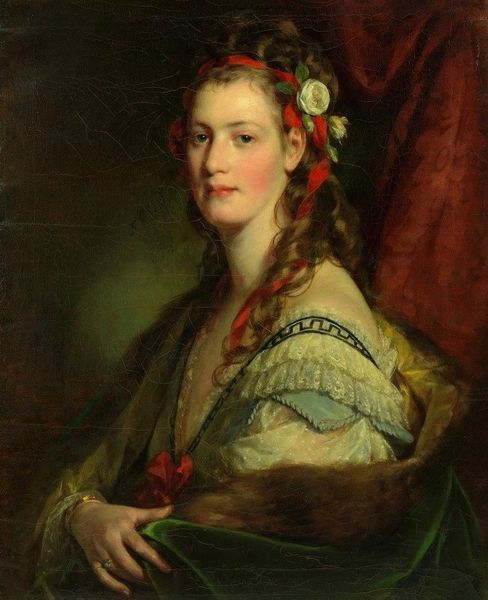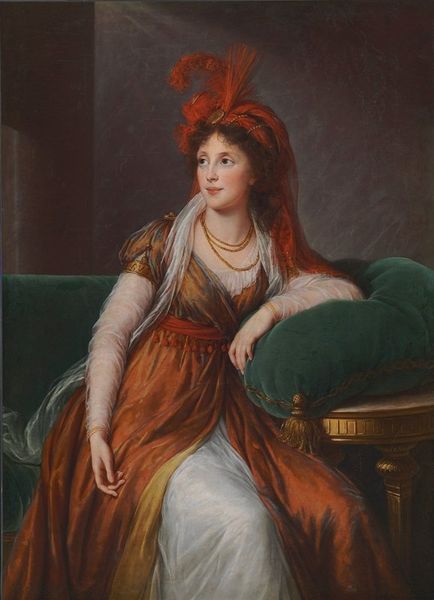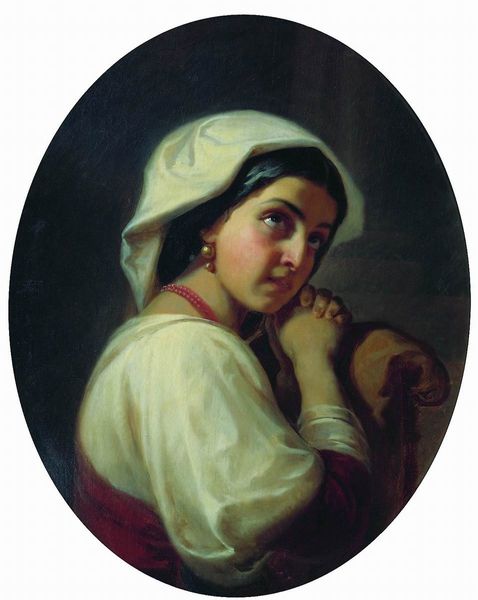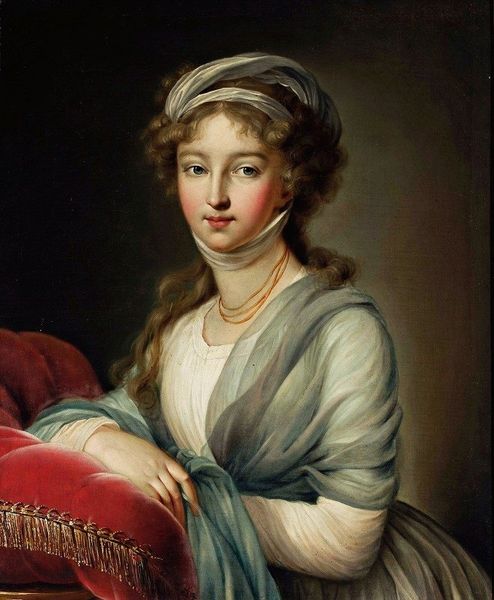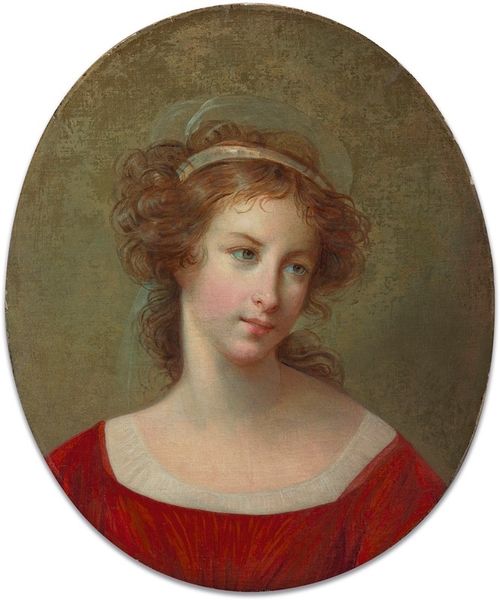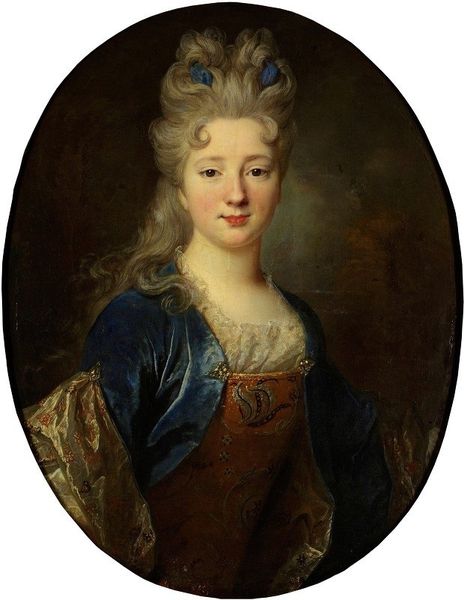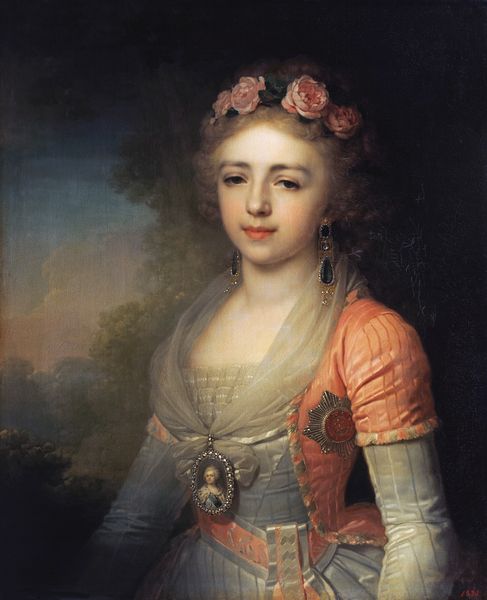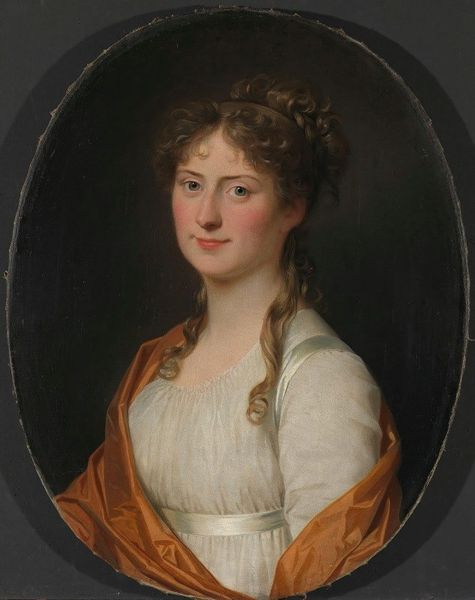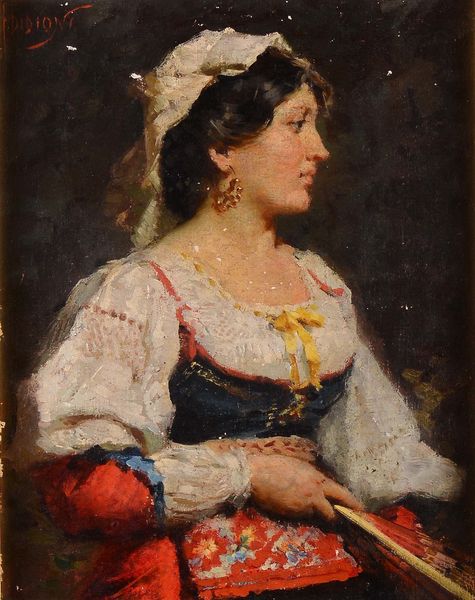
painting, oil-paint
#
portrait
#
painting
#
oil-paint
#
oil painting
#
romanticism
#
genre-painting
#
history-painting
Copyright: Public domain
Curator: Look at the quiet strength in this image. We're viewing Vladimir Borovikovsky's oil painting, "Christina, the Peasant Woman from Torzhok," created around 1795. It now resides here at the Tretyakov Gallery in Moscow. Editor: It feels almost like a whisper of a painting. The oval format and soft, blended colours give Christina an ethereal quality. Almost… romantic, despite the somewhat curious headdress. Curator: That headdress, of course, is key. It signifies her region and status. Peasant women, even when depicted in portraits, carried their identities so visibly. She is in native dress, very typical. Editor: There's such a stillness, isn't there? Despite the history implied by her dress and background, the symbols… her gaze is disarmingly modern, even direct. Curator: Indeed, it's Borovikovsky's genius to humanize the archetype. This is still the era of Romanticism so she is portrayed according to certain aesthetic principles of the time. It isn’t just a dry ethnographic record. There’s empathy, a real desire to present her as an individual, not just a symbol of peasant life. He found something… remarkable. Editor: I wonder what she felt wearing such clothes in order to represent, perhaps, a history she had with those clothes. It reminds me how portraiture can be more about performance than accurate reflection, with all of the cultural complexities therein. Curator: Yes, portraits often carry so much psychological projection from both sitter and artist and can reveal things the subject didn't expect to say. As a form, the "historical portrait" becomes more about conveying universal experience via representation. She becomes us and our ability to recall and revive things thought forgotten, for generations to come. Editor: Beautifully put. For me, she embodies an uncanny blend of history and timelessness. Christina’s story reminds me to always search beyond the obvious signs.
Comments
No comments
Be the first to comment and join the conversation on the ultimate creative platform.
